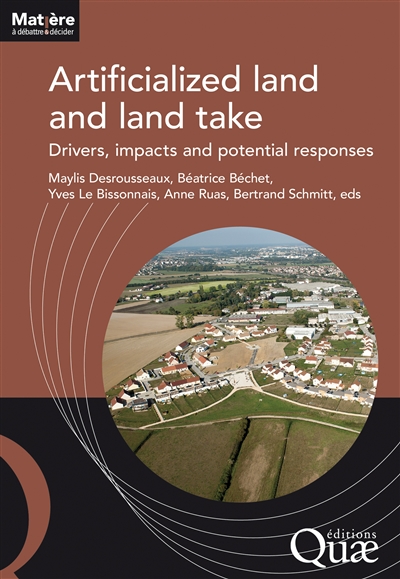en savoir plus

Carte fidélité
Permet à tous ses détenteurs d'obtenir 5% de réduction sur tous les livres lors du retrait en magasin (réduction non cumulable avec les réductions de type étudiant).
Offre également un certain nombre d'avantages auprès de nos partenaires.
Wishlist
Avec les favoris, retrouvez dans un espace les sélections effectuées au fur et à mesure de vos navigations dans le site.
Constituez pour votre usage personnel vos listes de livres en prévisions d'achats futurs et votre sélection d'articles, dossiers, événements, vidéos ou podcasts préférés ou à découvrir plus tard...
Il suffit simplement de cliquer sur "Ajout Favori" sur chaque page qui vous intéresse pour les retrouver ensuite dans votre espace personnel.
Requiert un compte Mollat
Mes Alertes
Requiert un compte Mollat
Artificialized land and land take : drivers, impacts and potential responses
en savoir plus
Résumé
Une étude sur les déterminants économiques et sociaux de l'artificialisation des sols et de ses impacts sur l'environnement ainsi que sur l'agriculture. Les contributeurs proposent des moyens d'action afin de répondre à l'objectif du gouvernement, celui de supprimer les sols artificialisés d'ici 2050. ©Electre 2025
Lire la Quatrième de couverture
Réduire la Quatrième de couverture
Soil artificialization is a recent concept, initially responding to the concern to quantify the loss of land available for agricultural use through changes in land use. Today, it refers to the overall reduction in the proportion of land devoted to agricultural and forestry activities or to natural areas, thus going beyond the strictly agricultural dimension.
Land artificialization and land that has already been 'artificialized', have become, particularly in France, a major issue of public debate and political concerns. Land artificialization is thus seen as one of the main factors in the erosion of biodiversity, which explains why, since 2015, the rate of land artificialization is one of the 10 « Wealth Indicators » developed by the Government to monitor its public policies.
In this context, the French Ministry of Ecology, the French Agency for Ecological Transition (ADEME) and the French Ministry of Agriculture, Agrifood, and Forestry wanted to have access to scientific knowledge that would enable them to better identify the economic and social determinants of soil artificialization, its impacts on the environment and on agriculture, and the levers for action likely to limit its development and negative effects. They entrusted IFSTTAR (now université Gustave Eiffel) and INRA (now INRAE) with the task of carrying out this collective scientific expertise. The main conclusions are presented in this book first published in French in 2019.
Fiche Technique
Paru le : 01/02/2024
Thématique : Agriculture et monde paysan
Auteur(s) : Non précisé.
Éditeur(s) :
Quae
Collection(s) : Matière à débattre et décider
Série(s) : Non précisé.
ISBN : 978-2-7592-3836-1
EAN13 : 9782759238361
Reliure : Broché
Pages : 167
Hauteur: 21.0 cm / Largeur 15.0 cm
Épaisseur: 1.1 cm
Poids: 701 g

